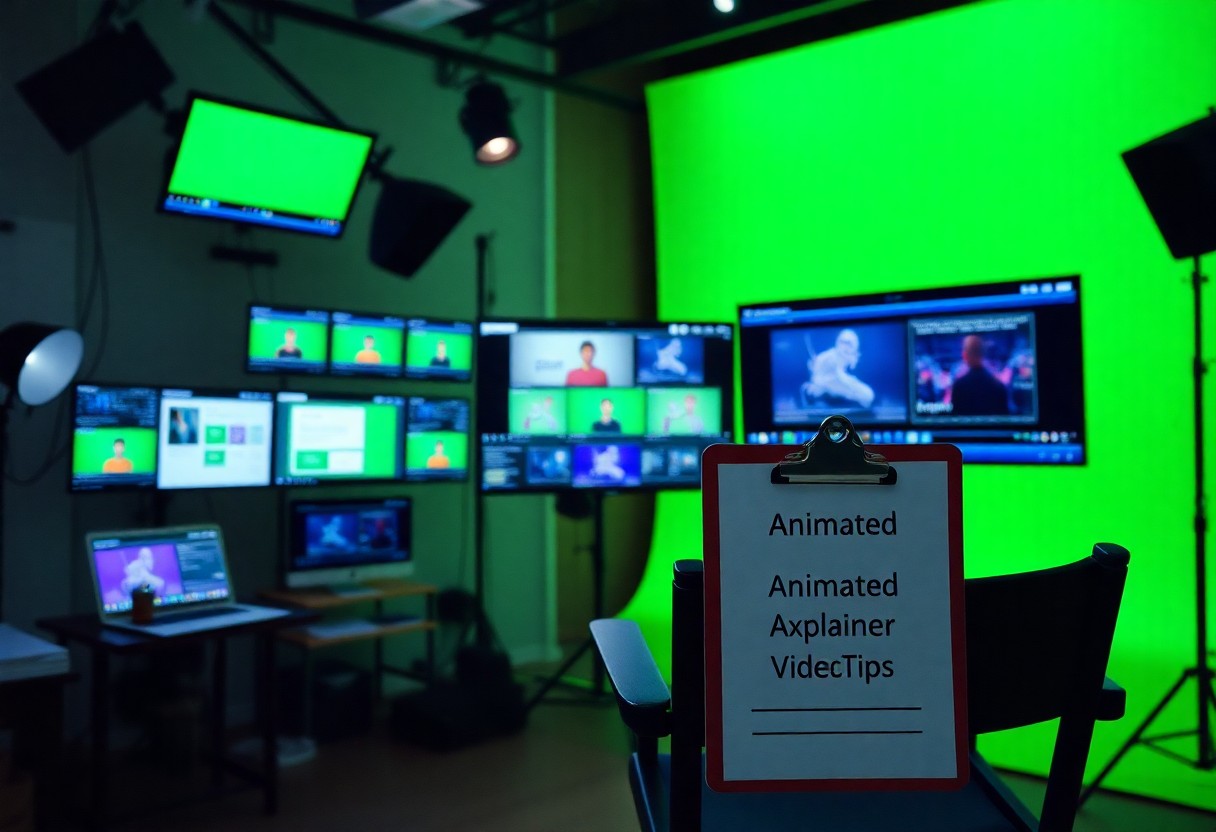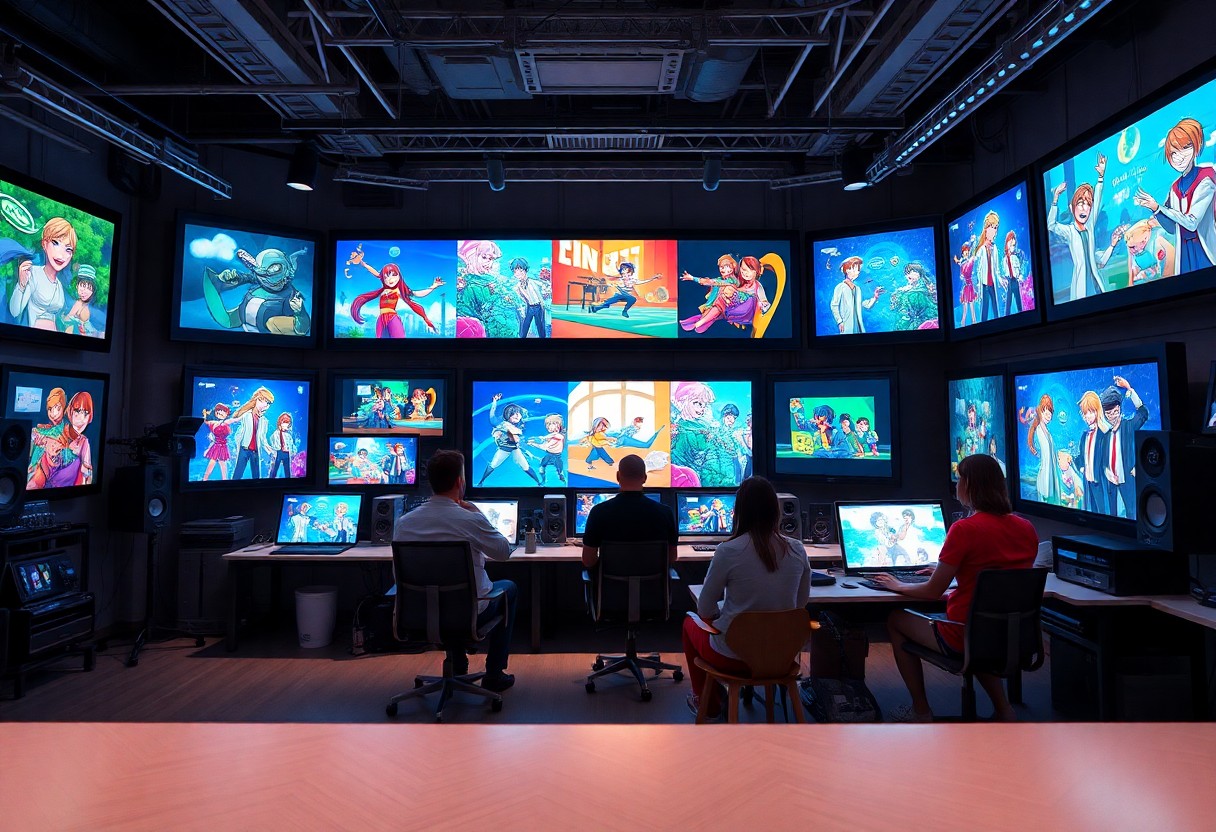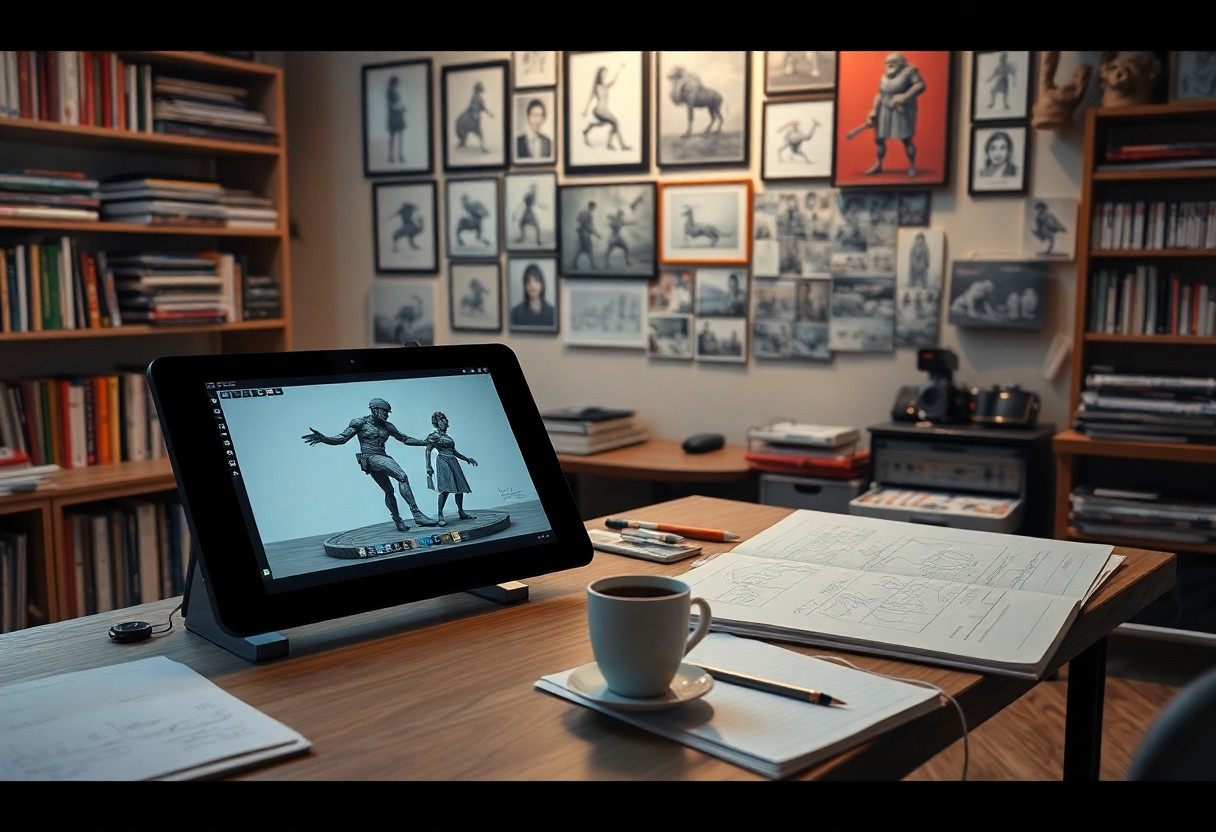
Aug 15, 2025
Top 5 Mistakes to Avoid When Creating Animated Explainer Videos
You may think creating animated explainer videos is straightforward, but there are key pitfalls that can undermine your efforts. I’m here to share the top five mistakes I’ve encountered during my journey in animation that you should avoid at all costs. By steering clear of these common errors, you’ll enhance your video’s effectiveness and ensure it resonates with your audience. Let’s dive in and transform your project into a compelling visual narrative that captivates and informs!
Key Takeaways:
- Ensure your script is concise and focused, avoiding unnecessary jargon to keep viewers engaged.
- Prioritize high-quality visuals and sound to enhance storytelling and maintain audience interest.
- Keep your target audience in mind during the creation process to tailor the content effectively.
- Avoid overly complex animations that may distract from the message rather than support it.
- Test your video with a sample audience to gather feedback and make improvements before finalizing it.
Skipping Pre-Production Planning
Jumping straight into creating your animated explainer video without a solid plan often leads to chaos and inefficiency. Pre-production is where you map out your vision, define your target audience, formulate your key messages, and establish a timeline. Without this groundwork, everything from scriptwriting to animation can become a daunting hurdle instead of a smooth process. I’ve found that dedicating time to pre-production pays off significantly, resulting in a final product that aligns closely with your objectives and resonates with viewers.
The Dangers of Impulse Creation
Impulse creation can be tempting, especially with creative ideas flowing. However, rushing the process often leads to inconsistency in messaging and poor quality. When I acted on impulse in past projects, I noticed that my animations lacked coherence and failed to capture the audience’s attention. Valuable insights and feedback gathered during the planning phase get overlooked, making it easy to miss potential pitfalls in your project.
Essential Elements of a Creative Brief
A well-crafted creative brief acts as your project’s blueprint, helping to streamline the production process. Key elements to include are your project overview, target audience, messaging goals, visuals style preferences, and timeline. Establishing these points allows for clearer communication among team members and ensures everyone is on the same page. I’ve often referenced my creative briefs as valuable tools for navigating the complexities of animation creation, aligning creative vision and expectations.
In more detail, your creative brief should begin with a concise project overview that outlines the purpose of the video. Clearly define your target audience—include demographics, interests, and pain points to ensure your message speaks directly to them. Mapping out your core messaging is vital, so summarize your key points in a few sentences. Consider the desired tone and style, whether it’s fun, serious, or educational, as this influences your visual choices. Finally, develop a realistic timeline that accounts for each production stage to keep your project on track. I’ve found that having all of these elements documented fosters accountability and clarity going forward in the project.
Overlooking Audience Needs
Neglecting your audience’s needs can derail your animated explainer video from the outset. Understanding who your viewers are defines the message, tone, and visuals you’ll use. Failing to connect with them means you risk making content that doesn’t resonate or, worse, misses the mark entirely. Prioritizing audience needs ensures your video is not only engaging but also effective in conveying your core message.
Identifying Your Target Demographic
To create a successful explainer video, pinpointing your target demographic is a fundamental step. Research insights about their age, interests, behaviors, and challenges to tailor content to their preferences. Tools like surveys and social media analytics can provide important data, allowing you to craft a video that speaks directly to them.
Crafting a Relatable Message
Once you know your audience, focus shifts to crafting a message they can relate to. Personalizing your approach means connecting with viewers on an emotional level—demonstrating that you understand their problems and have a viable solution. This relatability encourages engagement and increases retention, making your message memorable.
For instance, if your target audience consists of young entrepreneurs, my message should reflect their aspirations and struggles. By incorporating relatable anecdotes or humor that aligns with their lifestyle, the message transforms from a mere presentation into a meaningful conversation. Leveraging storytelling techniques can help bridge the gap between your brand and your audience, making it clear that you not only value their experience but also provide solutions tailored to their lives.
Ignoring Visual Consistency
Disregarding visual consistency can lead to a jarring experience for viewers. Maintaining a uniform style throughout your animated explainer video encourages engagement and reinforces your messaging. A hodgepodge of visual elements can confuse your audience and cause them to disengage before reaching the core message you want to convey. Strive for a cohesive visual narrative that aligns with your brand’s identity; this consistency not only enhances professionalism but also strengthens your brand recognition.
The Importance of Cohesive Branding
Cohesive branding connects the visual elements of your video to your overall brand image. Each component, from colors and fonts to animation styles, should align with your branding guidelines. When your visuals echo your brand’s personality, you create a unified experience that leaves a lasting impression on your audience. Strong branding fosters trust and recognition, making it more likely that viewers will remember your message.
Common Mistakes in Style Choices
Many creators fall into the trap of mixing various styles, colors, and themes, which can create a disjointed final product. For instance, if you use cartoonish animations alongside more serious typography, the incongruity can unsettle viewers. Additionally, choosing colors that clash or don’t resonate with your branding can weaken your video’s effectiveness. By sticking to a defined style guide, you can avoid these pitfalls and ensure that all elements work harmoniously to support your narrative.
Common mistakes in style choices often stem from a lack of focus on the brand’s core identity. For example, using multiple animation styles might inadvertently communicate a lack of direction or professionalism. To maintain visual consistency, create a mood board that reflects your brand’s palette, typography, and character designs before beginning production. Adhering to a cohesive aesthetic not only enhances aesthetic appeal but also ensures your message is received effectively by providing clarity and context. This thoughtful approach simplifies the choice of visual elements, making your video more impactful and recognizable.
Underestimating Script Quality
A common pitfall when creating animated explainer videos is underestimating the sheer power of a well-crafted script. The script serves as the foundation for your video; it dictates the pacing, tone, and overall message. Focusing solely on visuals while neglecting the script can turn an engaging concept into a muddled presentation that fails to resonate with your audience. Investing time in writing a compelling and focused script will not only enhance viewer retention but also improve the effectiveness of your communication.
The Role of a Strong Narrative
A strong narrative acts as the backbone of your explainer video. It weaves together your message into a cohesive story, allowing viewers to connect emotionally with your content. Establishing a relatable character or scenario can draw your audience in and help illustrate the problem you aim to solve, making your solution far more impactful.
Balancing Information and Entertainment
Striking the right balance between being informative and entertaining is imperative for holding viewers’ attention. Load your script with valuable insights while embedding storytelling elements that keep the audience engaged. By using humor, relatable examples, or eye-catching anecdotes, your explanation transforms into an enjoyable experience without sacrificing important details.
Finding that sweet spot can be challenging. Multiple studies reveal that videos with both informative content and engaging narratives increase retention rates by as much as 30%. Pairing statistics with lighthearted humor or relatable scenarios helps convey critical messages while making them enjoyable. The goal is to ensure your audience comes away feeling informed yet entertained—not overwhelmed with information or bored by endless facts. Consider testing your scripts with a focus group to gauge whether you’ve hit the mark; often, fellow creators or friends can provide valuable feedback on this delicate balance.

Neglecting Effective Distribution Channels
Creating an outstanding animated explainer video is just the first step; how you distribute it can make or break its success. Many individuals or teams overlook targeted distribution channels, assuming that simply posting on social media will yield results. Channels like email marketing, website embedding, and even partnerships with influencers or industry blogs can amplify your reach significantly. Without a strategic distribution plan, your video might not be reaching the audience who would benefit most from your content.
Choosing the Right Platforms
Selecting the correct platforms for distribution is a key factor in maximizing your animated explainer video’s impact. Different platforms cater to diverse audiences, and understanding where your target demographics engage is crucial. For example, B2B audiences tend to be more accessible on platforms like LinkedIn, while younger consumers might prefer TikTok or Instagram. By aligning your video with the right channels, you increase the chances of higher engagement and conversion rates.
Measuring Success through Analytics
Setting goals for your animated explainer video is just the beginning; tracking its performance through analytics allows you to understand its impact. Analyzing metrics such as views, shares, comments, and conversion rates offers valuable insights into audience behavior and preferences. Tools like Google Analytics and social media insights can provide detailed reports that guide future content creation and distribution strategies. Knowing how viewers interact with your video will empower you to make data-driven adjustments and enhancements.
Diving deeper into analytics, I recommend focusing on key performance indicators (KPIs) that align with your specific objectives. Consider metrics like viewer retention rates, which indicate how long people are engaged before dropping off, or click-through rates that reflect how effectively your video drives traffic to your website or landing page. Tools such as heat maps can reveal the sections of your video that capture attention, helping refine future content. Ultimately, leveraging these analytics will guide you in optimizing your strategy and achieving better results with future animated explainer videos.
Summing up
Conclusively, avoiding these top five mistakes when creating animated explainer videos can significantly enhance your project’s effectiveness. I encourage you to prioritize clarity in messaging, invest in quality visuals, keep your videos concise, ensure the audio quality is high, and maintain a focused target audience. By following these guidelines, you can create engaging content that resonates with viewers and effectively communicates your message. Your animated explainer video can become a powerful tool for success, provided you steer clear of these common pitfalls.
FAQ
Q: What are the most common mistakes to avoid when creating animated explainer videos?
A: Some of the most common mistakes include overloading the video with information, neglecting to define a clear target audience, failing to highlight a strong call-to-action, using overly complex language, and not keeping the video length manageable. Each of these factors can detract from the effectiveness of the video.
Q: Why is it important to define a clear target audience for an animated explainer video?
A: Defining a clear target audience is vital because it helps tailor the video’s content, tone, and style to resonate with viewers. Understanding who the audience is allows for more effective communication of the message, ensuring it meets their needs and captures their attention.
Q: How long should an animated explainer video be to maintain viewer engagement?
A: The ideal length for an animated explainer video is typically between 60 to 90 seconds. This duration is enough to convey a concise message while keeping the audience engaged. Longer videos can risk viewer drop-off, so it’s important to get to the point quickly without sacrificing the message’s clarity.
Q: What role does a strong call-to-action play in an animated explainer video?
A: A strong call-to-action (CTA) is vital as it directs viewers on what to do next after watching the video. Whether it’s visiting a website, signing up for a newsletter, or making a purchase, the CTA should be clear and compelling, guiding the audience toward taking that next step.
Q: How can overly complex language affect the effectiveness of an animated explainer video?
A: Using overly complex language can alienate viewers and lead to misunderstandings of the message. It’s important to use simple, accessible language that conveys the concept in a way that anyone can understand. This ensures clarity and improves the overall effectiveness of the communication.



